
Greyhounds are quiet, well-mannered and wonderfully easy to live with. They’re friendly, affectionate, calm and clean – the kind of dog who’ll happily trade marathon runs for marathon naps. Most greyhounds are healthy, low-maintenance companions who enjoy a short daily walk and then spend the rest of the day curled up on the couch. Like people, each greyhound has their own quirks – some love the company of other dogs, some stick like glue to their humans, and others are perfectly happy having their own space. That’s part of what makes them so special, and why we do our best to match every hound to the lifestyle and home where they’ll thrive.
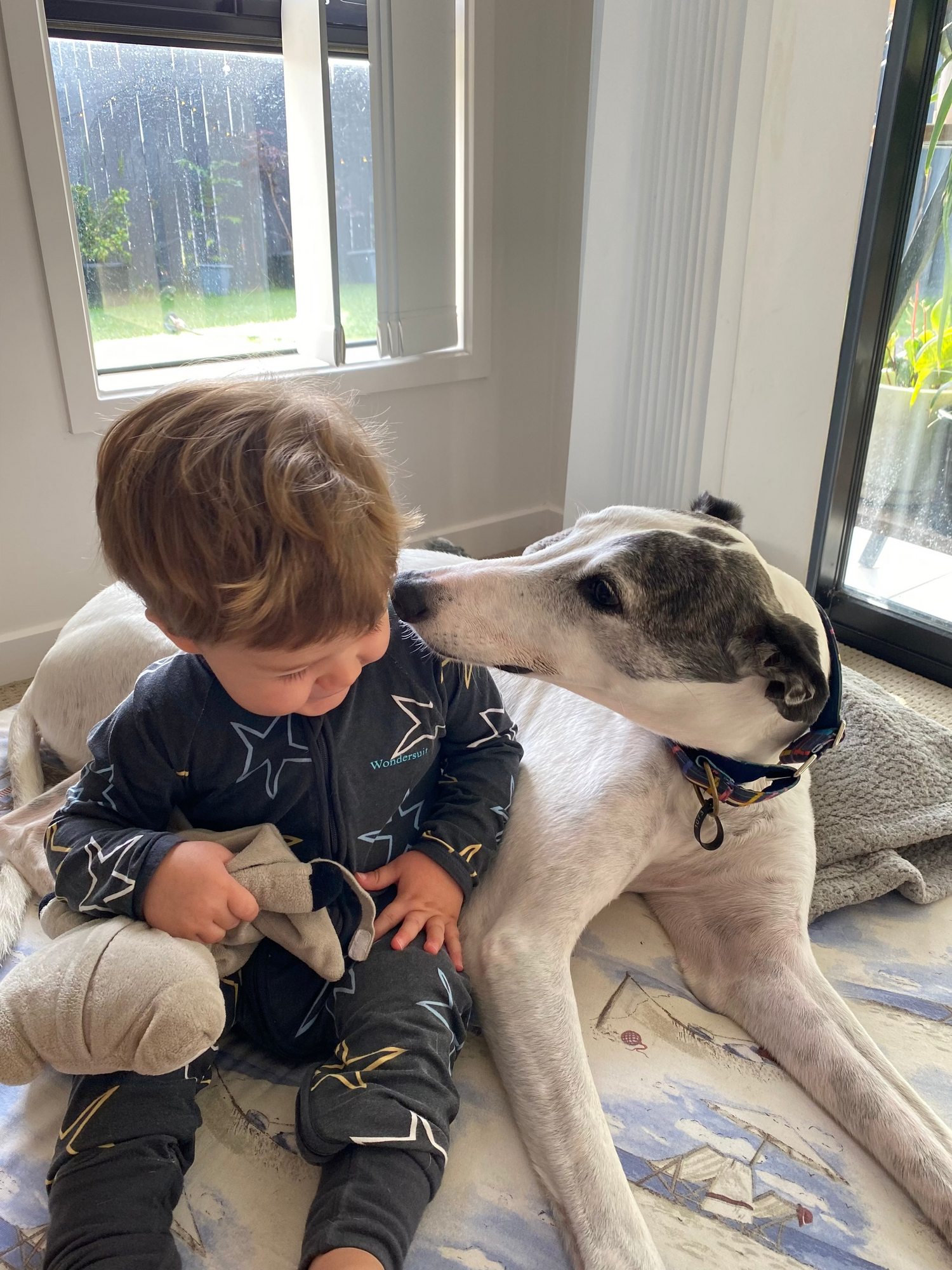
Personality
Greyhounds make wonderful pets, and with so many different personalities, there’s a hound to suit every home. They’re affectionate, gentle, and love being part of the family — whether that’s snuggling up on the couch, hanging out with their humans, or making friends with other dogs (and sometimes even smaller pets). More than anything, they just want to be included in your everyday life.
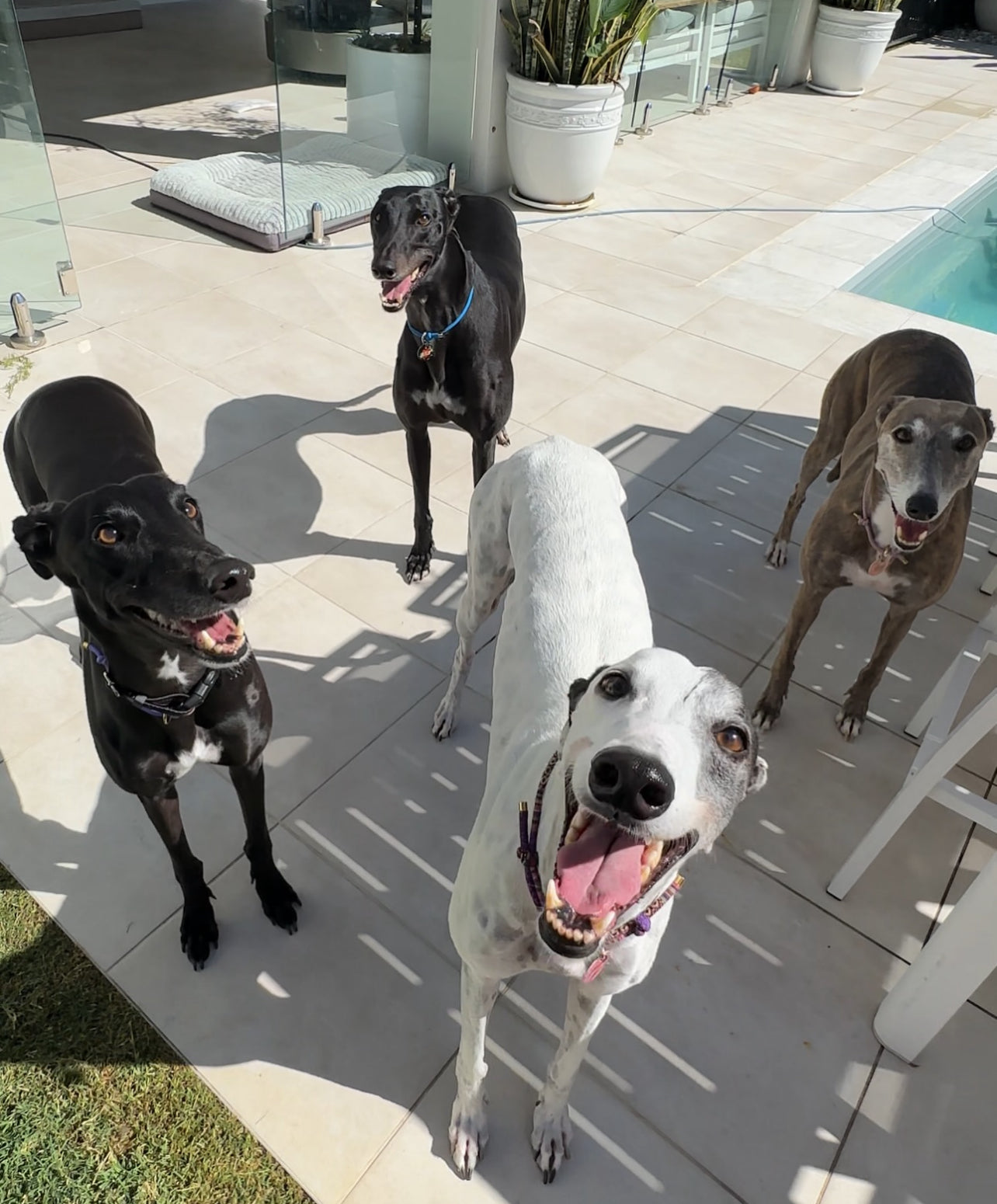
Health/Characteristics
Greyhounds live around 12–14 years and are surprisingly low-maintenance for such majestic dogs. With their slim, athletic build, deep chest and velvet-soft coat, they shed very little and don’t have that typical “doggy” smell. Quiet and gentle, they rarely bark and are healthier and hardier than many other breeds. As sight hounds, they rely more on their vision than smell — always alert, always graceful, and always ready to melt into your couch.
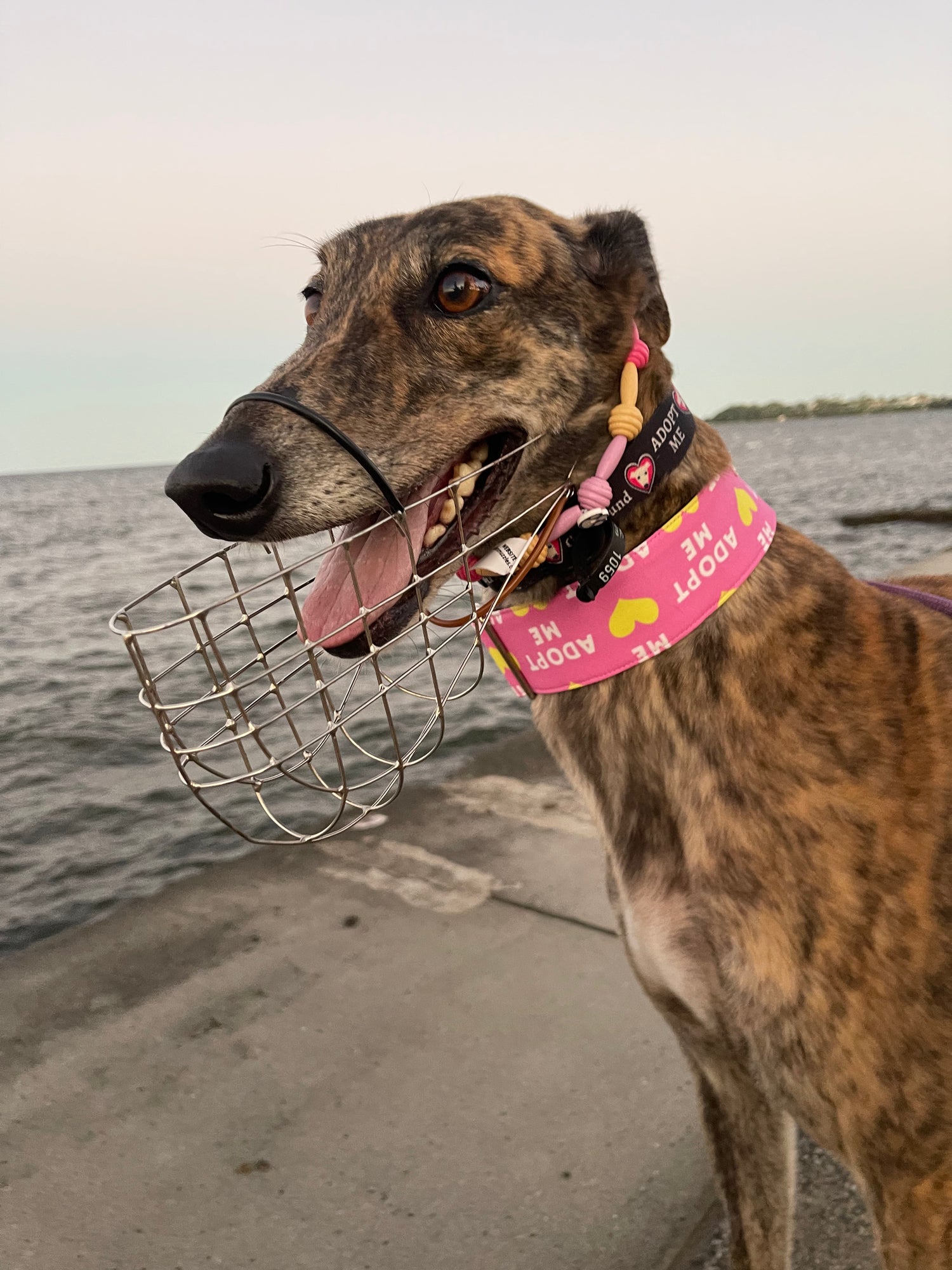
Exercise
Greyhounds are gentle, clever souls with a calm nature. Despite looking like athletes, they’re professional nappers at heart. All they really need is a short walk, a few zoomies in the yard, and a good sniffari — those slow, nose-led strolls where they can sniff every interesting scent — to feel content. Their easygoing vibe makes them a surprisingly perfect fit for apartments and city living.
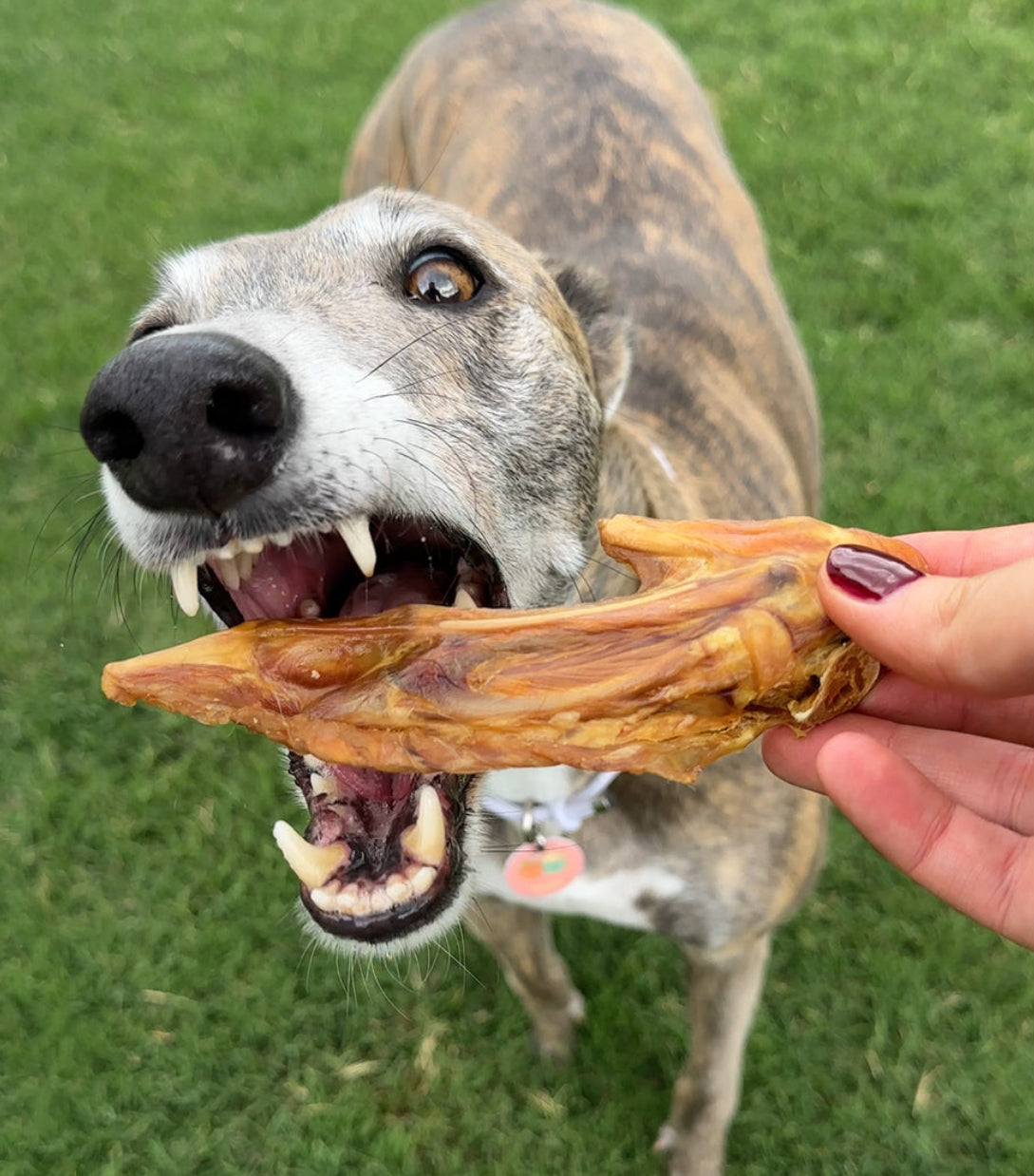
Feeding & Care
Greyhounds do best on two meals a day — usually around 2–3 cups of quality dry food and 200–400 grams of fresh meat, depending on their size. They thrive on raw or homemade meals too, like chicken wings or necks, mince, rice, pasta, eggs, sardines, and veggies. And don’t forget the crunch factor — kibble, dental sticks, and brisket bones help keep those teeth clean and healthy.
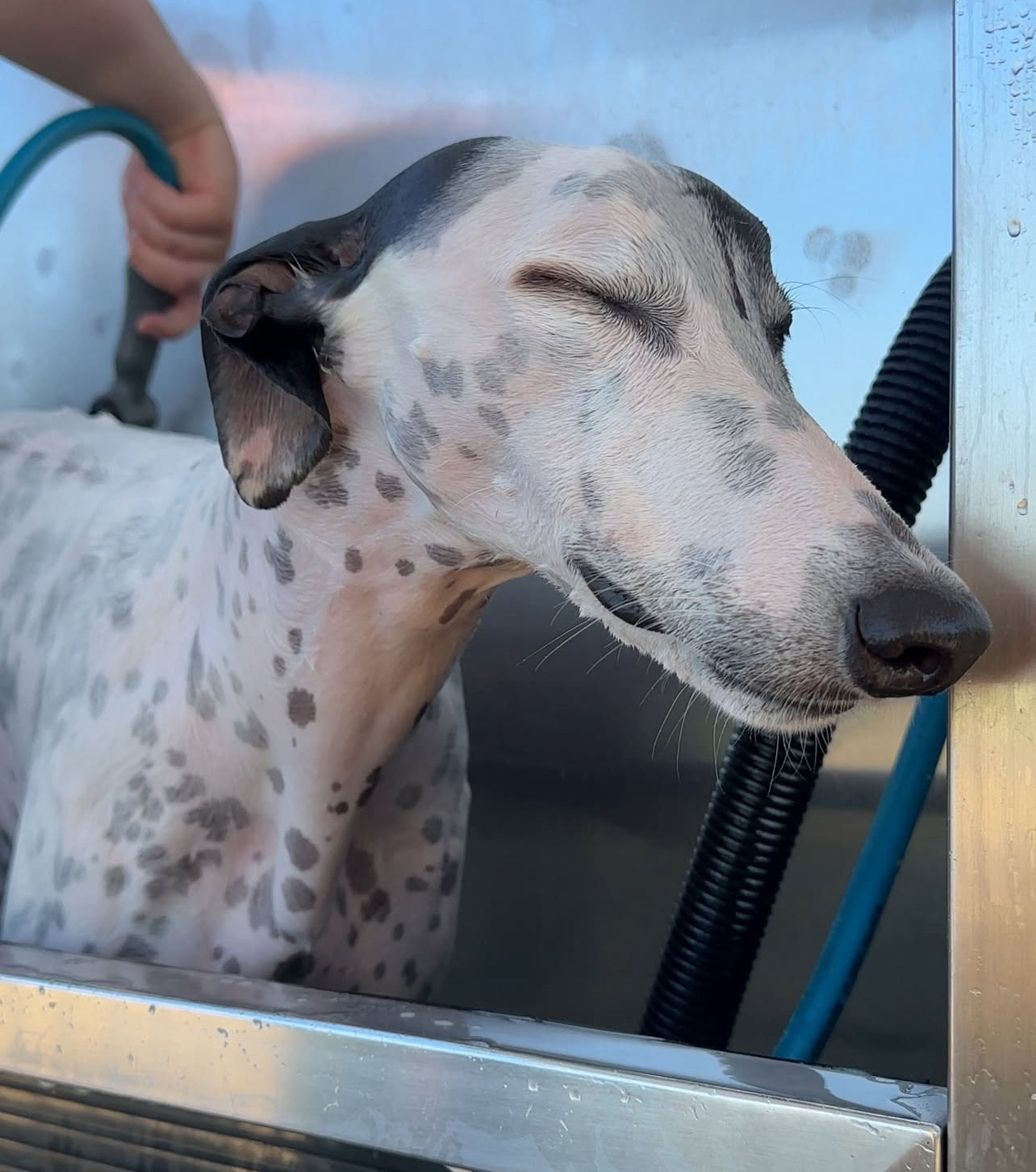
Ongoing Care
Greyhounds are pretty low-maintenance, but a little regular care keeps them happy and healthy. They’ll need monthly worming, heartworm, flea and tick treatments, plus a yearly booster vaccination. A quick weekly brush will keep their coat soft and shiny, and a bath every month is plenty (too many can dry out their skin). In winter, they’ll need a cosy coat — they don’t have much body fat to keep them warm. Regular checks of their ears, teeth and nails help keep everything clean and trimmed, and of course, vet visits if they ever get sick or injured. Add in daily exercise, some mental stimulation, and plenty of company, and you’ve got one very content hound.
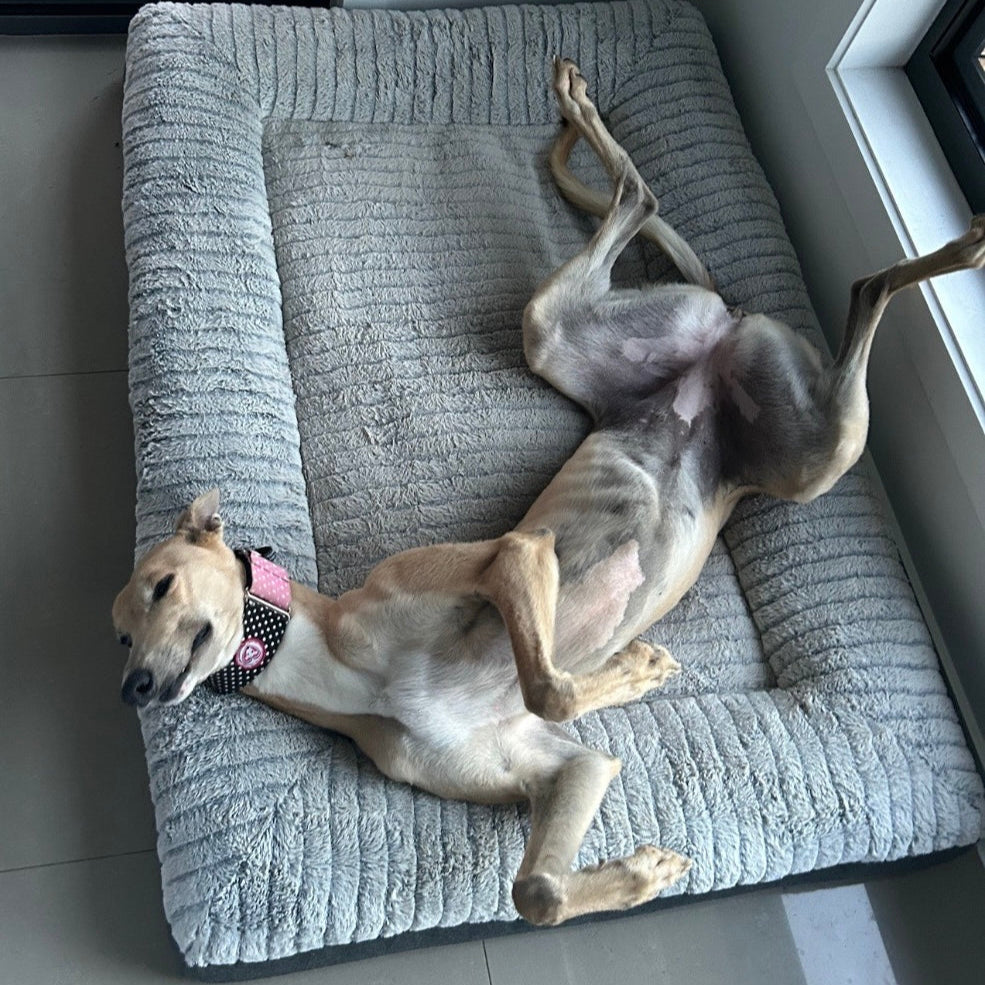
Quirks
Souveniring/Nesting: Many greyhounds “decorate” their bed by collecting shoes, pillows, toys, or socks and piling them up.
Roaching: That funny upside-down pose with legs in the air — pure relaxation.
Teeth Chattering: A little teeth or lip quiver usually means excitement (think dinner time!).
Leaning: Greyhounds gently lean on you for pats, scratches, or just to say “I love you.”
Zoomies: Sudden bursts of joy — high-speed laps around the yard.
Talking: Some “roo” (a howl) or chatter away to get attention or join in the conversation.
